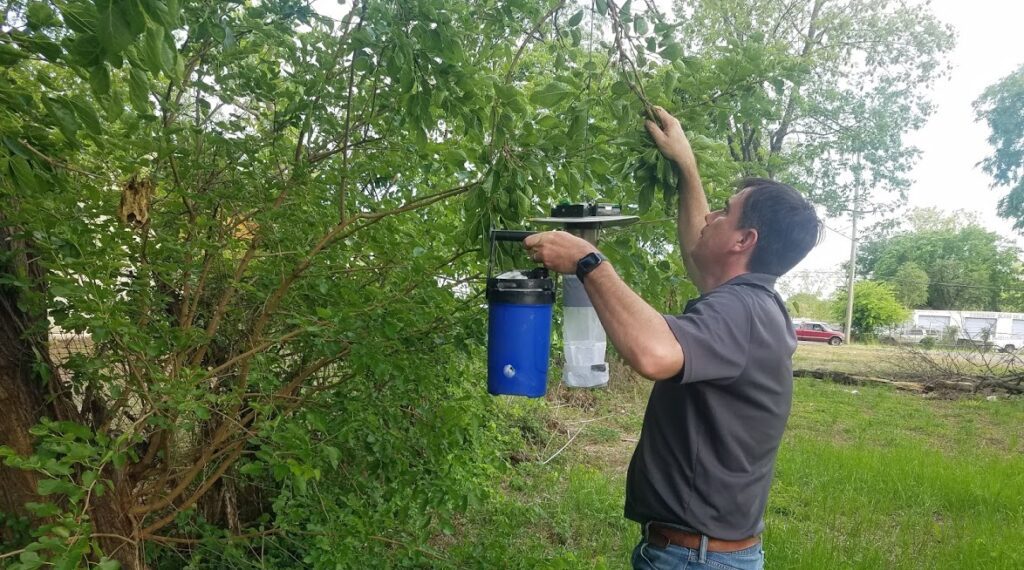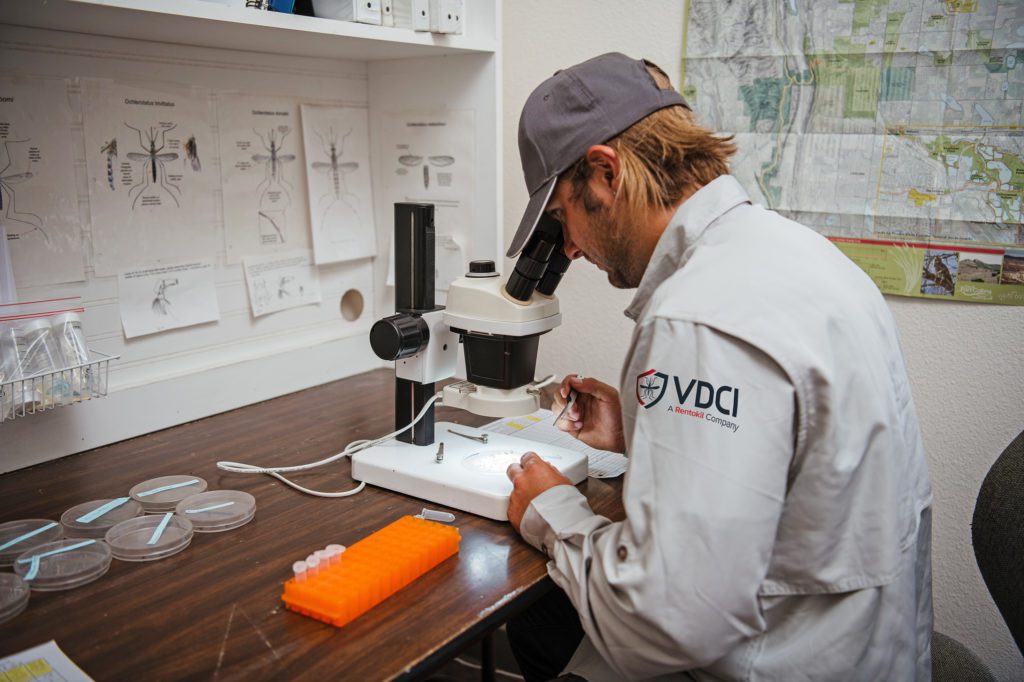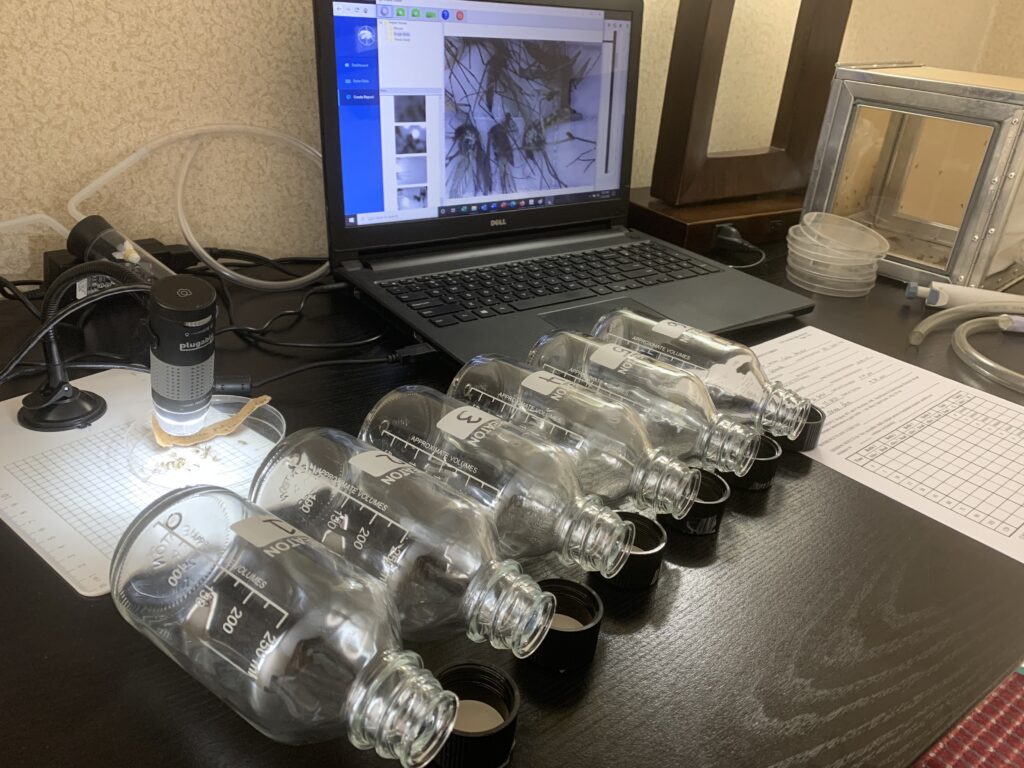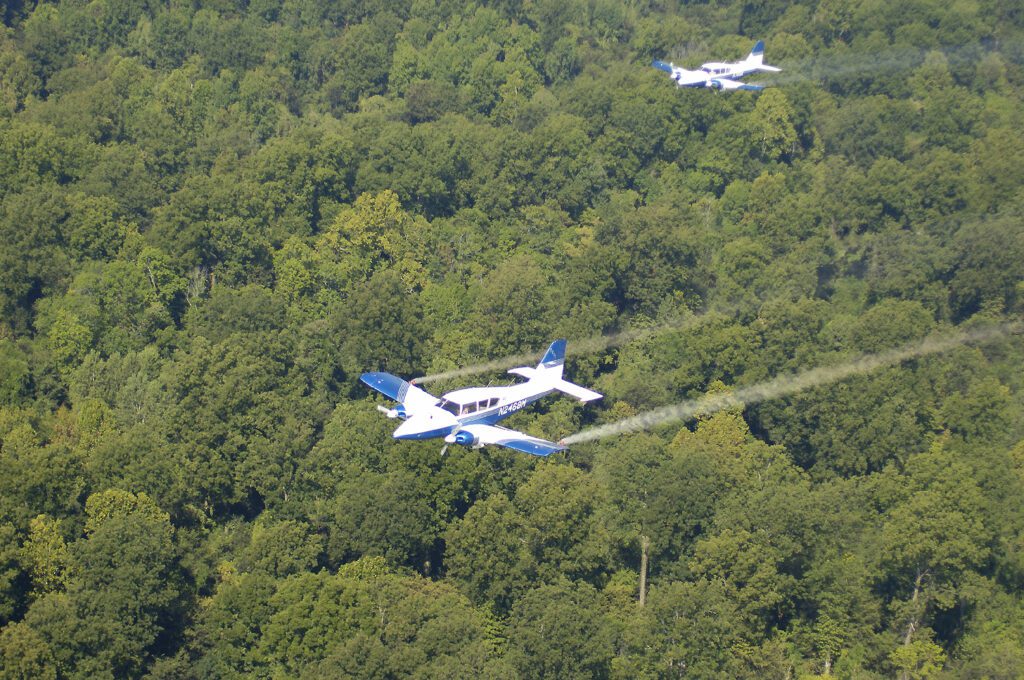Mosquitoes are one of the biggest threats to public health in our communities, killing more than one million people each year across the globe. Government leaders are tasked with the difficult job of protecting citizens from mosquito-borne diseases, but unfortunately, there is no one-size-fits-all solution. Effective management and prevention require a comprehensive understanding of local mosquito activity, evolving population dynamics, and emerging insecticide resistance – knowledge that cannot be achieved without the ongoing support and guidance of a scientific laboratory.
Mosquito laboratories play a critical role in every step of the management process, from building Integrated Mosquito Management (IMM) programs and emergency response plans to keeping the public informed about mosquito activity. As a mosquito management company licensed in public health, VDCI understands the uncertainty and fear that can arise when diseases are identified in a community. Everyone deserves peace of mind while enjoying the outdoors, which is why we use laboratory testing and data collection to drive safe, efficient, and environmentally friendly IMM programs. Here’s what goes on behind the scenes in a professional mosquito laboratory.
Identify Local Mosquito Populations via Trapping

Trapping is the first step in understanding mosquito composition within a region. VDCI employs various mosquito traps to capture different mosquitoes based on the species, their disease-carrying potential, and the types of habitats they prefer. Traps are strategically placed in target areas around a community.
The CDC Light Trap is a primary device used for mosquito collection. Created by the Centers for Disease Control and Prevention, this trap is considered the gold standard for mosquito collection and is typically set between dusk and dawn when mosquitoes are most active. The CDC Light Trap contains a battery-motorized fan and carbon dioxide (CO2) to attract and pull mosquitoes into the device.
Experts may also choose to deploy other tools like the BG-Sentinel Trap, the Gravid Trap, or the New Jersey Light Trap, each of which uses alternate strategies to lure mosquitoes. Gravid Traps, for example, are filled with stagnant water containing organic matter to mimic a natural egg laying habitat. After the designated collection period, experts return the samples to the lab for analysis and data collection.
Examining Mosquito Samples In the Lab

When mosquito-borne diseases are present in a community, immediate action must be taken to protect the public and keep government leaders up-to-date on evolving safety levels. Disease detection tests arm government leaders with virtually real-time knowledge to make critical public health decisions and management choices. This information can then be shared with other local agencies to take preventative action such as distributing educational materials and expanding insecticide application efforts in high-risk areas.
VDCI regularly partners with health departments, schools, and local organizations to keep the public informed about personal protection and mosquito prevention around their homes and businesses. Laboratory scientists play a key role in facilitating communication between the experts “on the ground,” community leaders, and government agencies to ensure timely and effective implementation of mosquito control efforts. VDCI’s proprietary database makes it possible to consistently and transparently report urgent information to decision-makers.
Utilizing Lab Data to Help Reduce Insecticide Resistance

The tests performed in the laboratory serve as an essential backbone of management programs. Over time, the results help form a complete picture of mosquito dynamics in a community – and the risk of disease transmission. This data can also be a powerful predictor of annual mosquito activity, helping government leaders to accurately prepare for the year ahead. This may include choosing trap locations, determining testing intervals, and setting the thresholds that prompt action. By tailoring programs based on laboratory data, communities can use funds and products more efficiently while reducing the risk of insecticide resistance.
In addition to disease monitoring, insecticide resistance monitoring is one of the most important aspects of mosquito management. In the lab, scientists regularly complete tests to gauge the effectiveness of products currently in use. CDC Bottle Bioassays are used to identify resistance in adult mosquitoes. During the testing process, female mosquitoes are placed in bottles applied with a diluted pesticide solution and observed. The mortality data is compared against a control group for signs of resistance. Similarly, Larval Cup Bioassays expose mosquito larvae to diluted products to examine mortality.
Determining the Type of Insecticide Resistance
Determining the type of resistance that has occurred is crucial in developing an effective management strategy for the mosquito population. There are several types of insecticide resistance:
- Cross-resistance occurs when mosquitoes become resistant to multiple insecticide products that work in the same way.
- Multiple resistance occurs when mosquitoes become resistant to several different types of mosquito products.
- Target site resistance is when mosquitoes develop a genetic mutation that protects them from products designed to target a specific genetic trait.
- Behavioral resistance occurs when mosquitoes change their behavior to avoid exposure to specific products, such as not landing on surfaces that have been treated with insecticides.
Mosquito management experts can use this knowledge to measure the success of ongoing management initiatives and make responsible adjustments if product use has become less efficient.
Executing Mosquito Control Strategies for A Safer Community

EPA-registered larvacides and insecticides are necessary and invaluable components of Integrated Mosquito Management programs. When the threat of disease transmission is high, these products help quickly and safely eliminate dangerous populations. Experts rely on data gathered through trapping and disease testing to identify areas most at risk and determine precisely how much product should be used for maximum effectiveness. This data may also dictate the types of equipment used such as ULV (Ultra-Low Volume) trucks or backpack sprayers, aircraft, or modern technologies like state-of-the-art drones. Technology used for the management of mosquitoes is always improving. Scientists are driving new innovations to make it faster and easier to count mosquito eggs, identify species, distinguish between male and female mosquitoes, and remotely detect high-risk areas for mosquito breeding such as stagnant ponds and pools.
Mosquito management is challenging. High reproduction rates, wide species distribution, and strong adaptability make mosquitoes one of the most resilient species in the world – one that’s survived for millions of years. More than ever, science-backed management strategies, public education, and coordination among stakeholders are necessary to combat mosquitoes and minimize the threat of deadly diseases. Scientific laboratories are at the epicenter of these efforts and will continue to play a fundamental part in the safety and enjoyment of our communities.
Contact Us to Learn More About Effective Mosquito Prevention Strategies:
 Since 1992, Vector Disease Control International (VDCI) has taken pride in providing municipalities, mosquito abatement districts, industrial sites, planned communities, homeowners associations, and golf courses with the tools they need to run effective mosquito control programs. We are determined to protect the public health of the communities in which we operate. Our mosquito control professionals have over 100 years of combined experience in the field of public health, specifically vector disease control. We strive to provide the most effective and scientifically sound mosquito surveillance and control programs possible based on an Integrated Mosquito Management approach recommended by the American Mosquito Control Association (AMCA) and Centers for Disease Control and Prevention (CDC). VDCI is the only company in the country that can manage all aspects of an integrated mosquito management program, from surveillance to disease testing to aerial application in emergency situations.
Since 1992, Vector Disease Control International (VDCI) has taken pride in providing municipalities, mosquito abatement districts, industrial sites, planned communities, homeowners associations, and golf courses with the tools they need to run effective mosquito control programs. We are determined to protect the public health of the communities in which we operate. Our mosquito control professionals have over 100 years of combined experience in the field of public health, specifically vector disease control. We strive to provide the most effective and scientifically sound mosquito surveillance and control programs possible based on an Integrated Mosquito Management approach recommended by the American Mosquito Control Association (AMCA) and Centers for Disease Control and Prevention (CDC). VDCI is the only company in the country that can manage all aspects of an integrated mosquito management program, from surveillance to disease testing to aerial application in emergency situations.

